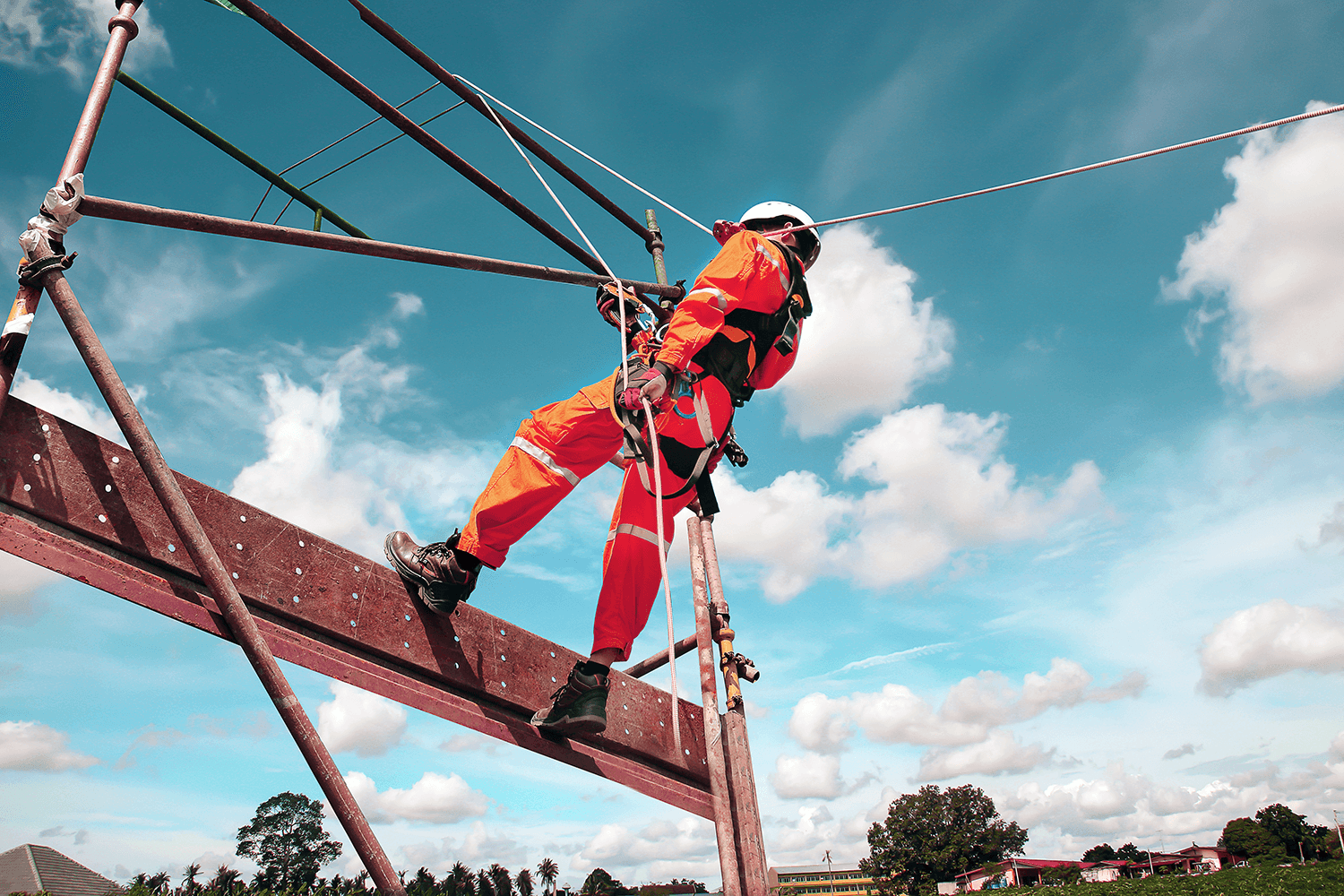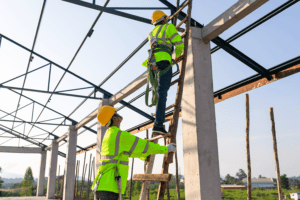9/29/2021—According to the National Safety Council (NSC), construction ranks number four as one of the most dangerous industries to work in the United States. The four main hazards in construction are falls, struck-by, electrocutions and caught-in/between, as defined by the Occupational Safety and Health Administration (OSHA).1 According to a study conducted by the Center for Construction and Research Training (CPWR), fatalities in construction in 2019 had reached the highest number since 2011. It’s apparent that construction safety is more important than ever. If you work in this industry and feel your organization isn’t doing everything to protect its employees, it’s imperative to advocate for employee safety and protect your workforce.
Employees are a company’s number one asset2, so when advocating for them in this industry, keep that in mind while planning a strategic and effective protection plan. Employees are a value to your company, without them the construction does not get done. Advocating for them is essential, and when you put their safety at the forefront, you provide them with the peace of mind to do their jobs effectively, knowing they are being provided every precaution.
Determine safety hazards. When advocating for employee safety be prepared with issues you have witnessed, which affects employees’ ability to perform specific jobs. Assess job sites for potential hazards. Examples of hazards encompass the top four safety issues listed above, falls, struck-by, electrocutions and caught-in/between. Note areas where hazards are present, like fall hazards in spaces with clutter or spills, exposed electrical wires, mishandling materials and machinery. Employees not practicing safety on the job site is another hazard that puts their coworkers at risk too, it’s important you provide employees with proper training for the benefit of all.
Collect your findings into a concise report, which easily demonstrates safety issues within your company. Gathering feedback from employees is a great way to discover any issues you may not have witnessed. Prepare safety suggestions and guidelines accordingly. While this can include better training programs, and simple steps like proper job site cleanup, this is the time to propose company policy changes like introducing safety technology, such as CoRe Connected Resources, which can greatly enhance safety procedures and employee safety training and monitoring.
Another important part of a safety report should be benefits to the company when making safety a priority. Putting safety first reduces costs and improves productivity on the job site. Accidents on job sites lead to cost overruns and project delays. Improving safety means fewer days lost due to accidents and injuries. A strong safety record can also reduce insurance costs to your company in the long run.2 Conveying a strong monetary incentive, along with employee wellbeing as the top motivation, is another successful tool to ensuring your company meets their needs.
The next step in the process is determining the proper audience to speak with. You don’t want safety concerns falling on deaf ears. Usually this means high-level management or CEOs who will make the final call on new safety guidelines. Inviting employees with concerns to attend safety meetings and voice their concerns is a method that involves your employee input directly, and can convey severity of safety issues, while making employees feel heard and assured.
With all the safety concerns in the construction industry, if you feel your company is not meeting these issues, putting employees first and advocating for their health and safety can protect them from serious injury or death on the job site, while also protecting your company’s liability and insurance costs. CoRe is proud to provide top-of-the-line safety monitoring, scalable to any company or job site size, utilizing our smart badges which monitor everything from proper employee training to remote worker injury and more.
Contact us today to learn how we can benefit your company’s safety.
…
1 CPRW The Center for Construction Research & Training. (n.d.). Fatal Injury Trends in the Construction Industry . Retrieved September 29, 2021, from https://www.cpwr.com/wp-content/uploads/DataBulletin-February-2021.pdf.
2 Most dangerous industries. Injury Facts. (2021, January 8). Retrieved September 29, 2021, from https://injuryfacts.nsc.org/work/industry-incidence-rates/most-dangerous-industries/.
Chapter 6: Promoting the safe WORKPLACE: Being an advocate. (n.d.). Retrieved September 29, 2021, from https://s3-eu-west-1.amazonaws.com/s3-euw1-ap-pe-ws4-cws-documents.ri-prod/9780415631846/chapter5/Being-an-Advocate-final.pdf.




